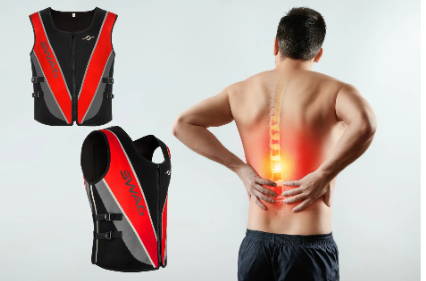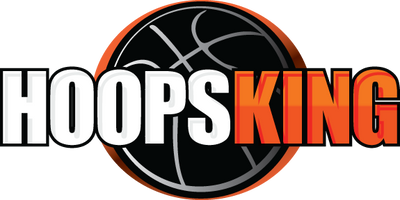Weighted vests are a prevalent fitness aid that can help in boosting bone mineral density and enhance general body composition. In this blog post, we'll explore how incorporating weighted vests into your resistance exercise routine can increase bone mineral density and why strong bones are crucial for long-term health.
By combining weighted vests with bodyweight exercises, you can increase the effectiveness of your workouts and maximize their benefits. By the conclusion of this article, you should be aware of why incorporating additional load into your workouts is a powerful way to augment their results and customize your exercise routine.
Table of Contents:
- Understanding Osteoporosis and Weighted Vests
- Benefits of Wearing a Weighted Vest for Osteoporosis
- Safety Precautions When Using a Weighted Vest
- Exercises to Do with a Weighted Vest for Osteoporosis
- Determining How Much Weight Should Be Worn and How Often
- FAQs in Relation to Weighted Vests for Osteoporosis
- Conclusion
- Elevate Your Coaching Game with Our Top-Notch Basketball Coach Resources and Lead Your Team to Victory!
Benefits of Wearing a Weighted Vest for Osteoporosis
Wearing a weighted vest can provide numerous benefits to those with osteoporosis. A weighted vest can be advantageous for individuals with osteoporosis, as it helps to enhance muscular strength and bone density, promote equilibrium, reduce the likelihood of falls, and improve overall well-being. The extra weight helps build up muscles in the arms and legs that are weakened by osteoporosis, which can prevent further fractures or breaks from occurring.
Weighted vests offer a way for those with osteoporosis to exercise safely and build muscle strength while minimizing the stress on their joints. The additional weight adds resistance to movements like walking or running that would otherwise be too difficult for someone with weak bones. This helps strengthen muscles while reducing stress on joints and bones, leading to improved balance and stability over time.
A heightened awareness of one's body in relation to its environment can be improved by wearing a weighted vest, which is beneficial for those with weakened bones due to age-related bone loss or osteoporosis. By increasing the sense of where their body is in space, individuals can better maintain their balance and reduce the risk of falls associated with poor coordination or weak muscles. Thus, through enhanced proprioception and improved muscle strength from the extra weight, wearing a weighted vest helps ensure stability while also providing resistance training that will not overly strain joints and bones.
When starting with a weighted vest, it is advised to begin with 10% - 15% of one's total body weight and not exceed 20%-25%, as too much strain can be placed on the skeletal system. It is recommended that users start off wearing 10% - 15% of their total body weight in order not to put too much strain on the skeletal system initially before gradually increasing weights if needed over time once they become accustomed to wearing the vest regularly during workouts. Additionally, make sure not to exceed 20% - 25% of total body weight when wearing a weighted vest so as not to cause undue stress on fragile bones affected by osteoporosis.
Wearing a weighted vest can provide many benefits for those with osteoporosis, including improved balance and strength. However, it is essential to be cautious when donning a weighted vest to prevent any harm or damage.
Safety Precautions When Using a Weighted Vest
Ensuring the right safety measures are taken when utilizing a weighted vest is essential to maximize its potential for boosting bone mineral density and bolstering bones. Here are some tips for coaches on how to safely use a weighted vest:
1. Start Slowly:
When beginning any exercise program with a weighted vest, start slow and gradually increase the weight over time. This will allow your body to adjust and prevent injury or overexertion.
2. Monitor Body Weight:
It is important to monitor your body weight regularly while wearing a weighted vest as this can help determine if you are pushing yourself too hard or not enough. If your weight fluctuates, immediately cease exercising and consult with a medical professional before resuming the exercise regimen.
3. Use Proper Form:
Make sure that you use proper form when performing resistance exercises with a weighted vest as improper form can lead to injury or muscle strain over time. Focus on keeping good posture throughout each exercise and avoid jerking movements which can put additional stress on joints and muscles unnecessarily.
4. Wear Protective Gear:
Wearing protective gear such as knee pads, elbow pads, wrist guards, etc., may be necessary depending on what type of exercises you’re doing while wearing the vest - especially if they involve jumping or running motions which could cause further damage without protection from impact forces.
Create an appropriate long-term plan for training with a weighted vest so that it does not become too strenuous over time. Alternating between different types of exercises will help keep workouts interesting while providing adequate rest periods between sessions, allowing muscles to have sufficient recovery time.
Safety should always be paramount when using a weighted vest; therefore, it is essential to adhere to all relevant safety measures. Therefore, when exercising with a weighted vest, it is important to select activities suited to your current physical abilities and health status.
Exercises to Do with a Weighted Vest for Osteoporosis
Weighted vests are a great tool for basketball coaches to use when training athletes with osteoporosis. Weighted vests can provide an additional level of resistance, enabling athletes with osteoporosis to enhance their bone and muscle strength while also increasing balance, coordination, and stamina and reducing the risk of injury. When used correctly, weighted vests can improve balance, coordination, strength, and endurance while reducing the risk of injury or fracture.
Beginning cautiously is key when utilizing a weighted vest for an individual with osteoporosis; the amount of weight should be increased bit by bit over time. Begin with no more than 10% of your body weight in the vest and gradually increase as you build strength. It’s also important that you monitor how often you wear it so as not to overwork your body or cause strain on any weak bones or joints.
Once you have determined what amount of weight is safe for your athlete to wear many exercises can be done safely with a weighted vest: walking lunges, squats, step-ups onto a box/bench/staircase (this will help build bone density), wall sits (great for building leg strength), push-ups (to work arms & chest), pull-ups (also works arms & chest), mountain climbers (great cardio exercise). These exercises should all be performed at low-intensity levels until they become comfortable enough to do them at higher intensities while wearing the weighted vest.
It’s also important that these exercises focus on slow controlled movements rather than explosive ones as this could lead to further injury or fractures due to weakened bones caused by osteoporosis. Additionally stretching before and after each workout session should always be included to avoid muscle fatigue or soreness afterward.
Remind yourself to prioritize safety when exercising with a person suffering from osteoporosis. Make sure to consult their doctor before starting any type of physical activity program involving a weighted vest.
For those with osteoporosis, wearing the correct amount of weight in a weighted vest can help to build stronger bones; however, it is important not to exceed this. Examining the amount of weight to be worn and how frequently for optimum results is necessary.
Determining How Much Weight Should Be Worn and How Often
Coaches of basketball must take into account multiple elements when deciding the amount and frequency of weight-bearing. Weighted vests can help strengthen bones weakened by osteoporosis, but they need to be used properly for maximum benefit.
Before beginning any weight-bearing exercise, it is important to consult with a doctor or physical therapist who specializes in osteoporosis for an assessment of the individual's health status and activity level so that appropriate amounts of weight can be safely worn. A specialist should be consulted to decide how much load is suitable for the person, considering their present state of health and amount of exercise. Coaches should also keep in mind that wearing too much weight could cause injury if not done correctly.
The next factor to consider is the frequency of use. Wearing the vest should be limited to physical activity as advised by a medical professional or PT; generally, no more than half an hour at once with pauses between reps and drills that last no longer than fifteen minutes per session. For best results, coaches should plan three days per week with one day off in between workouts for rest and recovery purposes.
It’s important to remember that everyone’s body responds differently when using weighted vests so it may take some trial and error before finding what works best for an individual athlete or patient with osteoporosis. Start light – about 5-10 pounds – then gradually increase over time until reaching the optimal amount determined by their medical professional which will vary from person to person depending on age, fitness level, bone density, etc
Coaches must ensure proper form is maintained when using weighted vests; this entails keeping good posture during exercises and executing slow, controlled movements instead of jolting motions which can put undue strain on joints, potentially leading to injury if not done correctly. Athletes should also don comfortable attire such as sweatpants or shorts along with supportive shoes like running sneakers in lieu of sandals or flip flops while exercising with a weighted vest so they can move freely without risking any slips or falls due to improper clothing choices.
When determining the amount of weight to be worn in a weighted vest, coaches must consider various elements such as consulting medical professionals, following usage instructions, increasing weights gradually over time, and more. This includes consulting medical professionals, following usage instructions, increasing weights gradually over time, ensuring proper form and attire during workouts, taking regular breaks throughout sessions, and allowing adequate rest periods between workouts. Doing so helps ensure safety while maximizing effectiveness; thus helping individuals achieve their desired results faster while avoiding potential injuries caused by incorrect usage.
FAQs in Relation to Weighted Vests for Osteoporosis
Do weighted vests really help osteoporosis?
Weighted vests have been explored for their potential to aid those with osteoporosis. Studies indicate that wearing a weighted vest may enhance bone density and strength in postmenopausal women, potentially diminishing the odds of fractures. However, further research is needed to confirm these results and establish guidelines for the safe use of weighted vests in those suffering from osteoporosis. It is recommended that individuals consult with their doctor before beginning any exercise program involving a weighted vest.
How long should I wear a weighted vest for osteoporosis?
Weighted vests may be advantageous for individuals with osteoporosis, yet the period to wear it should be set by a medical professional. The vest should not go beyond a tenth of the person's body mass and only be donned in brief stretches. It is important to start slowly, wearing the vest no more than 15 minutes per day before gradually increasing it as recommended by your doctor or physical therapist. If any pain or discomfort occurs during use, stop immediately and consult with your healthcare provider.
Is a weighted vest better than a weighted belt for osteoporosis?
It is difficult to definitively answer the question of whether a weighted vest or belt is better for osteoporosis. While both provide resistance training, there are pros and cons associated with each. Weighted vests provide greater flexibility in weight distribution and intensity levels, yet can be uncomfortable to wear for extended periods; whereas belts may not offer the same range of customization but are more comfortable due to their waist-level design. Conversely, weighted belts offer less range in terms of weight customization but may be more comfortable due to their design around the waistline. Ultimately it depends on individual preferences and needs when choosing between these two options.
Who should not wear a weighted vest?
Weighted vests should not be worn by those who are at risk for joint or back injuries, have poor posture, or lack proper conditioning. Wearing a weighted vest may be hazardous if done incorrectly, potentially leading to harm to joints or back. It is also important to note that athletes under 18 years old should avoid wearing weighted vests due to their still-developing bodies and bones. Therefore, it is best to consult with a doctor before using a weighted vest as part of an exercise program.
Conclusion
A weighted vest can be a useful asset for those with osteoporosis, aiding in developing bone mass and decreasing fracture danger. It is important, however, to understand how much weight should be worn and how often to maximize the benefits while minimizing any potential risks. With careful consideration of safety precautions as well as exercises that are appropriate for wearing a weighted vest, coaches can confidently recommend this option for those with osteoporosis looking to increase their strength and mobility.
If you're looking for coaching and training solutions to help manage osteoporosis, HoopsKing.com offers a variety of weighted vests designed specifically for this purpose. Take advantage of our experts today and get the support you need!
Elevate Your Coaching Game with Our Top-Notch Basketball Coach Resources and Lead Your Team to Victory!
- How We Can Help Your Become a Better Coach
- The Complete Guide to Coaching Basketball
- Basketball Training Videos with the Best Basketball Trainers
- Basketball Coaching Boards
- Basketball Coaching Equipment
- Coach by Last Name: Looking for a particular basketball coach's instructional DVD?
- Need Basketball Coach Gifts Ideas for your Favorite Coach?








